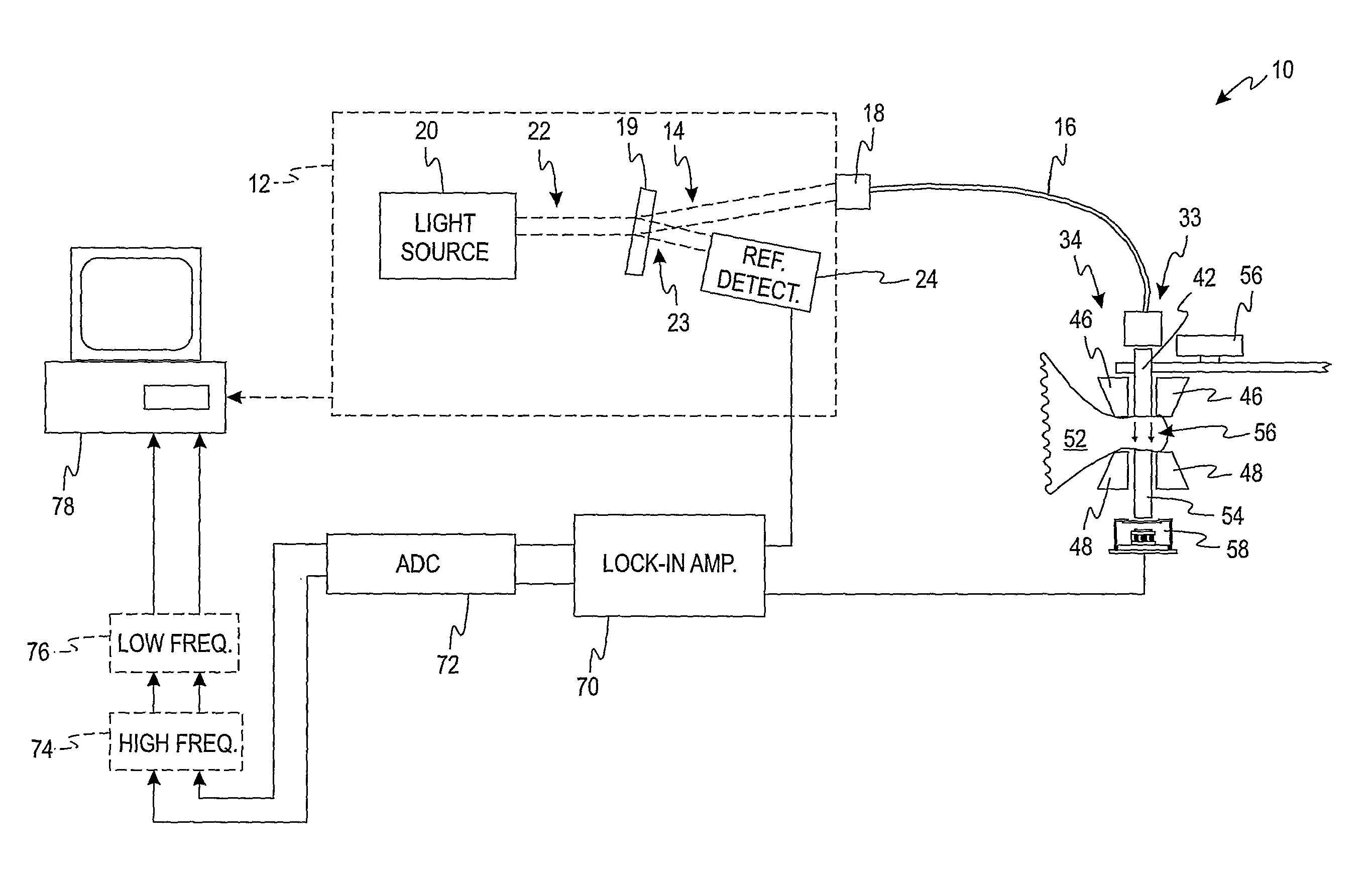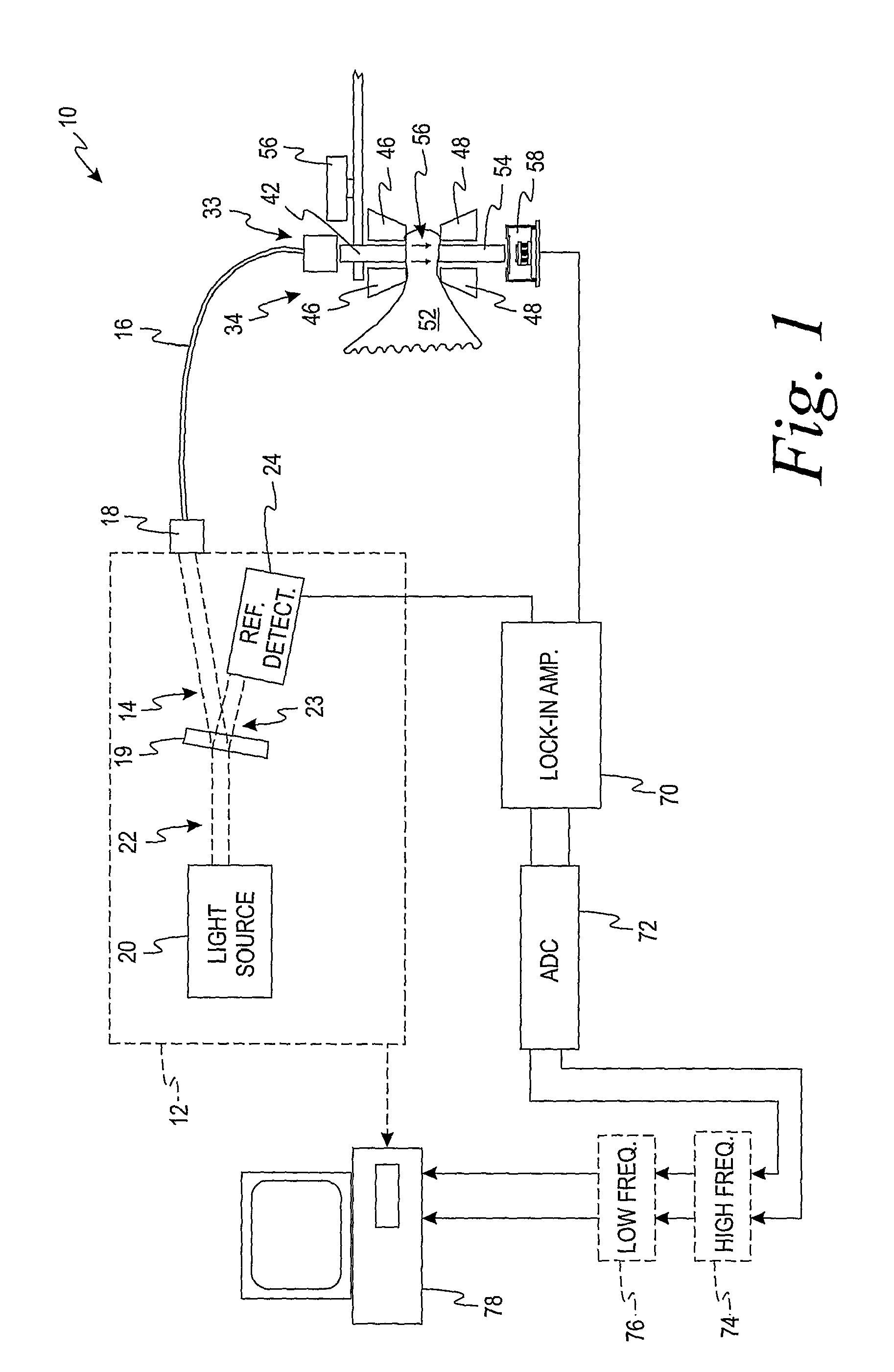Non-invasive system and method for measuring an analyte in the body
a non-invasive, body technology, applied in the direction of optical radiation measurement, instruments, spectrometry/spectrophotometry/monochromators, etc., can solve the problems of inability to take corrective action,
- Summary
- Abstract
- Description
- Claims
- Application Information
AI Technical Summary
Benefits of technology
Problems solved by technology
Method used
Image
Examples
embodiment b
[0090]Alternative Embodiment B
[0091]The system of Alternative Embodiment A wherein said light source is a series of beams of monochromatic light that scan across the predetermined wavelength range.
embodiment c
[0092]Alternative Embodiment C
[0093]The system of Alternative Embodiment B further comprising a reference detector adapted to receive a portion of said series of beams of monochromatic light and to convert the received light into a reference electrical signal.
[0094]Alternative Embodiment D
[0095]The system of Alternative Embodiment C wherein said light source is adapted to modulate the monochromatic beams of light, and further comprising at least one lock-in amplifier electrically for demodulating the reference electrical signal and for demodulating the electrical signal indicative of the received spectral information.
embodiment e
[0096]Alternative Embodiment E
[0097]The system of Alternative Embodiment B wherein said monochromatic light is delivered to said fluid sample sequentially across a predetermined wavelength range.
[0098]Alternative Embodiment F
[0099]The system of Alternative Embodiment E wherein the intensity of said monochromatic light is uniform over said predetermined wavelength range.
[0100]Alternative Embodiment G
[0101]The system of Alternative Embodiment E wherein the intensity of said monochromatic light is varied across said predetermined wavelength range to provide spectral information received from said sample having uniform intensity across said predetermined wavelength range.
[0102]Alternative Embodiment H
[0103]The system of Alternative Embodiment E wherein said monochromatic light is delivered to said sample for predetermined periods of time at predetermined wavelengths.
[0104]Alternative Embodiment I
[0105]The system of Alternative Embodiment H wherein said monochromatic light is delivered t...
PUM
 Login to View More
Login to View More Abstract
Description
Claims
Application Information
 Login to View More
Login to View More - R&D
- Intellectual Property
- Life Sciences
- Materials
- Tech Scout
- Unparalleled Data Quality
- Higher Quality Content
- 60% Fewer Hallucinations
Browse by: Latest US Patents, China's latest patents, Technical Efficacy Thesaurus, Application Domain, Technology Topic, Popular Technical Reports.
© 2025 PatSnap. All rights reserved.Legal|Privacy policy|Modern Slavery Act Transparency Statement|Sitemap|About US| Contact US: help@patsnap.com



